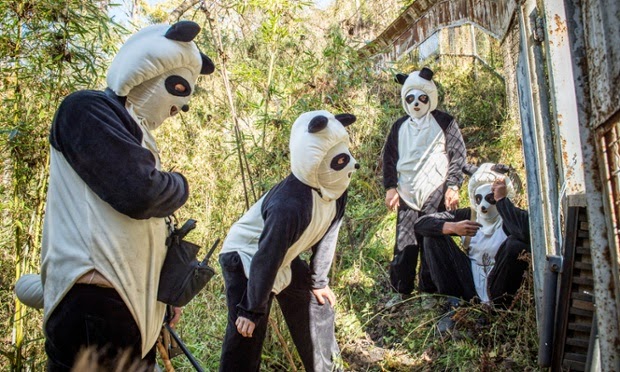"The giant panda lives in a few mountain ranges in central China, mainly in Sichuan Province, but also in the Shaanxi and Gansu provinces. As a result of farming, deforestation and other development, the panda has been driven out of the lowland areas where it once lived." Wiki: Giant panda

The pandas eat almost exclusively bamboo shoots and in captivity will eat a special Panda food plus oranges, eggs, bananas, and fish.

Because the Giant Panda doesn't reproduce easily this also makes it difficult for the population to increase. The female panda is only able to reproduce 2 - 3 days in the Spring and when the hairless, blind newborn panda is born it hardly can move around by itself for 3 months and must be protected by the mother panda. Animal Fact Guide
What is interesting is that efforts to repopulate the Panda is so hard. The Chinese had figure how to breed pandas and they remained in captivity in China, but to set them free became a quandary. In 2006 they set a full grown male free in a panda dense region named Xiang Xiang.First Panda Freed into Wild Found Dead
"Xiang Xiang, the first captive-bred giant panda ever released into the wild, sits in the Research and Conservation Center for the Giant Panda at Wolong Nature Reserve in China on April 27, 2006. The four-year-old male was set free the next day wearing a satellite tracking collar.
Xiang Xiang lived a year in the wild and then was found dead of injuries from fighting with other wild pandas, he didn't know how to protect himself.
So now the Wolong National Nature Reserve which is managed by the China Conservation and Research Centre for the Giant Panda are trying a new approach to keep the newborn pandas separated from human contact. Any humans working with them are actually dressed in panda outfits and doused with panda scent: a combination of panda pee and feces.
At the end of the day it looks- so far- like their efforts have paid off.
So in the last two years the Centre has successfully released 2 polar bears: "And so far, Zhang’s team has managed to successfully reintroduce two pandas into the wild. The first, a captive-born male named Tao Tao, was set free in a nearby sanctuary with about 13 wild pandas in October 2012 and is reportedly thriving. And last November...(it was) observed the release of a second animal, a 2-year-old female named Zhang Xiang. At last update, in January, state media said Zhang Xiang had survived the two-month 'transition period' and was doing well."Inside the (not so) Secret World of Pandas











No comments:
Post a Comment